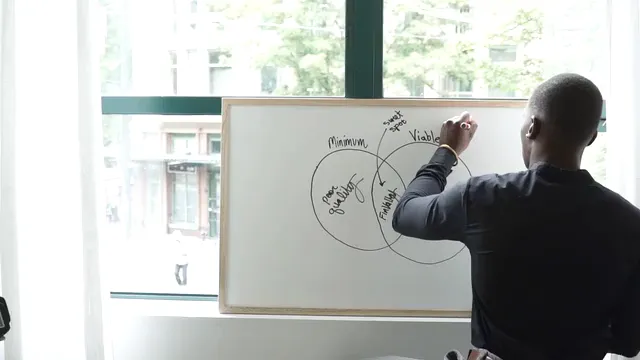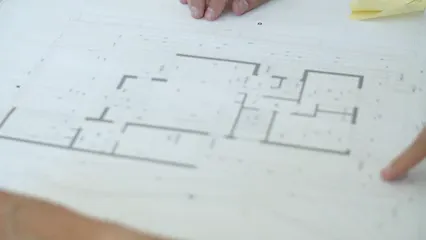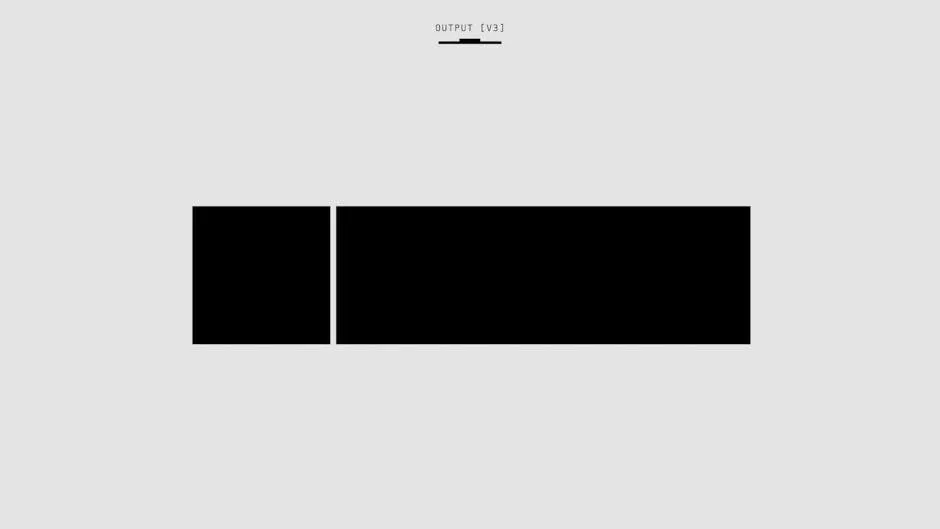Introduction
Lucidchart is a web-based diagramming application that boosts visual collaboration and productivity. It serves various industries by enabling users to create diagrams, flowcharts, and organizational charts easily. This article will highlight Lucidchart’s key features, diverse use cases, and best practices for maximizing its effectiveness.
Speaking of enhancing productivity, if you’re looking to streamline your project management, consider checking out the Project Management Essentials Book. This book is packed with practical advice that can help anyone manage their projects like a pro.
Summary and Overview
Lucidchart, developed by Lucid Software Inc., began its journey in 2008. Since then, it has evolved significantly, incorporating features that enhance user experience and collaboration. The application supports real-time diagramming, allowing teams to work together seamlessly from anywhere.
Lucidchart integrates with popular platforms like Google Workspace, Microsoft Teams, and Atlassian products, making it a versatile tool for diverse workflows. Its cloud-based nature means you can access your diagrams anytime, anywhere, without worrying about software updates. To really make the most of these integrations, consider investing in Google Workspace Integration Tools to enhance your productivity further.

In this guide, we will explore Lucidchart’s essential features, practical user scenarios, and expert tips for getting the most out of this powerful tool. Whether you’re a project manager, educator, or business analyst, you’ll find valuable insights to enhance your diagramming experience. Let’s dive into the world of Lucidchart!
Key Features of Lucidchart
Overview of Features
Lucidchart stands out for its intelligent diagramming capabilities. It allows users to create visually appealing diagrams effortlessly. The application operates entirely in the cloud, enabling real-time collaboration and a user-friendly interface. This means teams can work together from anywhere, making it ideal for remote setups. According to recent statistics, 96% of Fortune 500 companies use Lucidchart, highlighting its popularity and trustworthiness among professionals. Users report high satisfaction rates, with many appreciating its intuitive design and efficiency.
Diagram Automation
One of Lucidchart’s most useful features is diagram automation. This functionality streamlines the diagram creation process significantly. Users can link their data directly to diagrams, eliminating the need for repetitive data entry. Auto-visualization allows for quick updates, ensuring your diagrams reflect the latest data at all times. With AI-powered diagram generation, simply describe what you want, and watch as Lucidchart creates the visual for you. This saves time and enhances productivity, allowing you to focus on what really matters.

If you’re looking for a comprehensive understanding of how to visualize complex information, consider picking up The Art of Visualizing Complex Information Book. This book will give you insights into transforming your data into clear visuals.
Collaboration Tools
Collaboration is a key aspect of Lucidchart. The platform offers real-time features like commenting, version history, and concurrent editing. This means multiple users can work on a diagram simultaneously and provide instant feedback. Additionally, Lucidchart easily integrates with popular communication tools like Slack and Microsoft Teams. So, whether you’re brainstorming in a meeting or discussing changes through chat, Lucidchart keeps everyone on the same page. This level of collaboration fosters a shared understanding and boosts team productivity.

For those who want to enhance their team’s communication, investing in Slack Communication Tools can be a game changer. These tools will help your team stay connected and informed.
Template and Resource Availability
When starting with Lucidchart, templates can be a game-changer. The platform offers a wide variety of templates that cater to different needs. You can find templates for flowcharts, organizational charts, UML diagrams, and more. These pre-designed layouts allow you to kickstart your projects without starting from scratch. Whether you’re mapping out a process or building an org chart, you’ll find a template that suits your needs.

Moreover, Lucidchart provides excellent educational resources. Their training materials and tutorials help users maximize the software’s potential. You can learn at your own pace, ensuring you get the most out of the platform. Additionally, the Lucidchart community is vibrant and supportive. Users share tips, tricks, and best practices, making it easier to overcome challenges. With these resources at your disposal, you can quickly become proficient in using Lucidchart.
How Teams Use Lucidchart
Process Mapping
Process mapping is a key feature of Lucidchart. It allows teams to create detailed flowcharts to visualize workflows. By mapping out processes, teams can identify bottlenecks and inefficiencies. This leads to optimized workflows and improved productivity.

For instance, operations teams can benefit significantly from process maps. They can visualize supply chains, track inventory management, and streamline production processes. In project management, flowcharts help teams clarify tasks, timelines, and responsibilities. By having a clear visual representation, everyone stays on the same page, reducing miscommunication.
And while you’re at it, consider enhancing your team’s productivity with a Productivity Planner. These planners can help streamline your team’s tasks and keep everyone focused on their goals.
Organizational Chart Creation
Creating organizational charts is another vital use of Lucidchart. These charts help visualize team structures, showing roles and reporting lines. This is especially useful for HR departments. By visualizing team dynamics, HR can improve hiring processes and onboarding.

Lucidchart integrates seamlessly with tools like BambooHR. This integration allows users to import employee data directly into the application. As a result, creating and updating org charts becomes a breeze. Teams can easily visualize changes in structure, enabling better planning and communication.
On a related note, if you’re looking for some great Organizational Chart Templates, these can be incredibly helpful in setting up your team structures quickly and efficiently.
Technical Diagrams
Technical diagrams are essential in various industries, especially software engineering. Lucidchart supports the creation of UML and ER diagrams, which are crucial for developers. These diagrams help in visualizing system architectures and database structures, making complex concepts easier to grasp.

For example, in the tech industry, software teams rely on UML diagrams to outline system designs. Similarly, database administrators use ER diagrams to understand relationships between data entities. Industries like finance, healthcare, and telecommunications also benefit from technical diagrams. By clearly visualizing systems, teams can make informed decisions and improve collaboration across departments.
With Lucidchart, creating these diagrams is efficient and intuitive, empowering teams to communicate their ideas effectively. And if you’re keen on mastering these technical skills, consider picking up a book on Business Process Management. It can provide you with deeper insights into optimizing processes.
Best Practices for Using Lucidchart
Effective Diagram Design
Creating clear diagrams is essential for effective communication. Start by using distinct shapes to represent different elements. For instance, use rectangles for processes and diamonds for decisions. This visual consistency helps viewers grasp concepts quickly.

Colors also play a vital role. Use contrasting hues to highlight important areas. However, avoid overwhelming your audience with too many colors. Stick to a simple palette that aligns with your brand or purpose.
Labels should be concise yet descriptive. Ensure every element is clearly labeled to prevent confusion. Remember, the goal is simplicity. An overly complex diagram can lead to misinterpretation. Strive for clarity to enhance understanding.
And if you’re looking to enhance your workspace, consider investing in an Ergonomic Office Chair. Comfort is key when you’re spending long hours designing diagrams!
Leveraging Integrations
Integrating Lucidchart with other software can boost your productivity. For example, connecting with Google Workspace allows for seamless diagram creation directly within your documents. This integration simplifies the process of sharing visuals across your team.

Another popular integration is with Jira. By linking diagrams to your project tasks, you maintain a clear understanding of processes and responsibilities. This connection keeps everyone aligned on project goals.
Consider using Lucidchart with Slack as well. This integration allows for quick sharing of diagrams during discussions, fostering real-time collaboration. Each integration enhances your workflow and ensures a smoother process.
And while you’re optimizing your setup, don’t forget about tools that can keep you focused, such as Noise-Canceling Headphones. They can help you concentrate better while working on complex diagrams.
Continuous Learning and Improvement
Engaging with training resources is crucial for mastering Lucidchart. The platform offers various tutorials to help you navigate its features. These resources can refine your skills, making your diagramming more efficient.

Participating in community forums is another great way to learn. You can ask questions, share experiences, and gain insights from other users. This communal knowledge can lead to more creative and effective diagram designs.
Lucidchart also hosts webinars and courses periodically. These sessions provide in-depth knowledge about specific features and best practices. Taking advantage of these opportunities can significantly enhance your proficiency and confidence in using Lucidchart.
If you’re interested in furthering your knowledge, you should explore Digital Marketing Essentials Book. It can provide you with insights into how to effectively promote your work and ideas.
Case Studies and User Testimonials
Many businesses have transformed their operations using Lucidchart. For instance, a global tech company utilized Lucidchart to enhance its project management processes. By creating clear flowcharts, they reduced project completion time by 25%. Team members could visualize tasks better, leading to fewer misunderstandings and quicker decisions.

Another success story involves an educational institution that improved its curriculum planning. They used Lucidchart to design organizational charts that mapped out course structures. This visualization helped faculty members collaborate effectively, resulting in a 30% increase in course offerings within a year.
Additionally, a healthcare provider reported significant improvements in patient care processes. By implementing Lucidchart for process mapping, they streamlined workflows, reducing patient wait times by 15%. This success not only enhanced patient satisfaction but also increased staff productivity.
User testimonials echo these successes. One user stated, “Lucidchart has revolutionized how our team communicates complex ideas. Our productivity has soared!” Another remarked, “Creating diagrams has never been easier. It’s a game-changer for our workflow.” These stories showcase how Lucidchart empowers teams to visualize, collaborate, and optimize their processes effectively.

And if you’re looking to keep your workspace organized for optimal productivity, consider using an Office Desk Organizer. A tidy workspace can make a huge difference in how you approach your work.
FAQs
What is Lucidchart?
Lucidchart is a web-based diagramming tool created by Lucid Software Inc. It enables users to visually collaborate on diagrams, flowcharts, and organizational charts. This platform enhances communication and improves workflow efficiency.
How does Lucidchart integrate with other tools?
Lucidchart integrates seamlessly with many popular platforms, including Google Workspace, Microsoft Teams, and Atlassian products. These integrations allow users to embed diagrams directly into their documents and maintain a cohesive workflow across different applications.
Is Lucidchart free to use?
Lucidchart offers both free and paid plans. The free version has limited features, while paid subscriptions provide access to advanced functionalities, such as automation and real-time collaboration.
Can I collaborate with others in real-time on Lucidchart?
Yes! Lucidchart allows real-time collaboration, enabling multiple users to work on diagrams simultaneously. This feature is essential for teams, enhancing communication and decision-making.
What types of diagrams can I create with Lucidchart?
Lucidchart supports various diagram types, including flowcharts, organizational charts, UML diagrams, ER diagrams, and many more. This versatility caters to a wide range of professional needs.
How can I learn more about using Lucidchart effectively?
To learn more, visit Lucidchart’s training resources, community forums, and documentation. These platforms offer tutorials and tips to help you master the tool and enhance your diagramming skills.
How does Lucidchart ensure data security?
Lucidchart prioritizes data security by encrypting all user information and complying with privacy standards. The platform is hosted in secure data centers, ensuring that user data remains protected and confidential.
Please let us know what you think about our content by leaving a comment down below!
Thank you for reading till here 🙂
All images from Pexels




